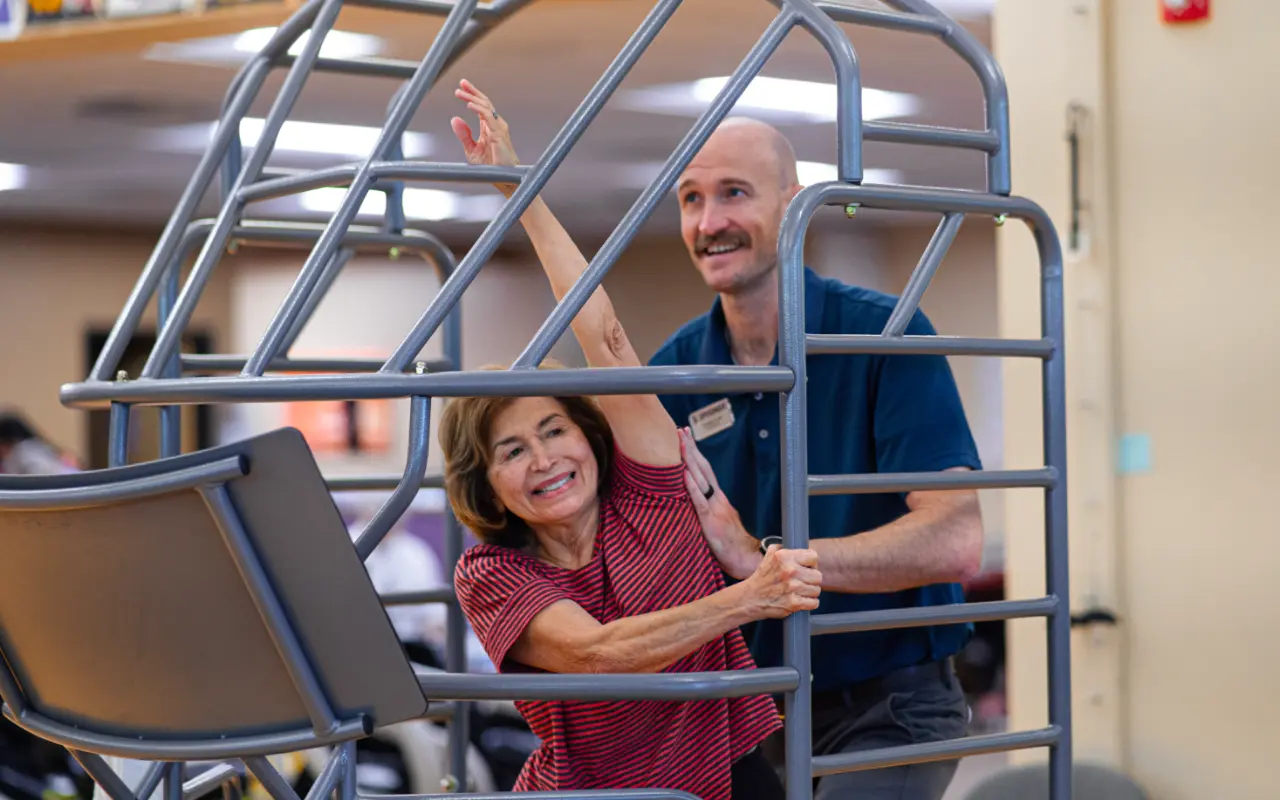By: John Kline, PT, DPT, CSCS, FAFS
You may have heard of scoliosis or have known someone to have it- but what is it exactly?
Scoliosis is a curvature of the spine. It affects 2-3% of the American population. It occurs equally between males and females, and most cases are diagnoses from the ages of 10 to 13. While this is a common diagnosis, it can persist throughout someone’s life, and it’s important to see how the curve changes over time.
Scoliosis is typically diagnosed during a regular check-up with a primary care provider. They utilize the Adam’s Test, which involves bending over and touching the toes so the provider can clearly see the spine. They are looking for a noticeable curvature or irregularities throughout the mid-to-low back. If the provider suspects scoliosis, you will be referred to get x-rays.
With imaging, the Cobb’s angles are measured. A straight line would be 0 degrees, and a right angle is 90 degrees. The measurements determine the extent of the curve based on those angles.
Over time, you will get multiple images of your back to see if the curve is progressing, and, if so, at what rate it is progressing. This is used by your entire treatment team to see what treatment options you have.
Scoliosis can present with a couple of different shapes of curves- a C curve or an S curve. C simply means there is one curve in the spine, and S means there are two. From there, the direction is determined- right or left, and where the curve is occurring. These can present primarily in the mid-back (thoracic) and the low-back (lumbar). With an S curve, there is likely a curve in both the mid-and-low backs.
How to Treat Scoliosis
You do not want scoliosis surgery. Rods are placed in the back, and the entire spine is fused. This is an incredibly invasive and painful surgery that takes away any mobility you could have in your trunk. With a lack of mobility, parts of your body start to break down because a lack of use or overcompensation. This procedure is only indicated if you have an extremely severe curve that is compressing and affecting your organs.
So, how do you treat it?
Positionally, someone with scoliosis leans over to their side and rotates. So, someone with a right apex thoracic curve will be rotated to the right but side bent to the left. And, if they have a left apex thoracic curve, they will be rotated left and bent to the right. The body has trouble being proprioceptively aware of these curves and thinks the spine is straighter than it is.
Going to a physical therapist for your scoliosis can help slow down the progression of the curve and in some cases even work towards straightening of your spine. You do a lot of proprioception and kinesthetic training to increase awareness of what is truly straight.
Along with this, we emphasize leg and hip strength because we want you to have a stable base to work off of. We also integrate a lot of core strengthening with scoliosis-specific motions. We teach your muscles to oppose the rotation. So, if you are right rotated, we want to work on left rotation strength. We work to get those muscles stronger to help pull you back the other way.
We also utilize the sequence of images of your back to know what is happening with your curve. Generally, everyone is going to start at 0 for their spinal curve. People who develop scoliosis will slowly start to develop that curve, and we look at the images to see the progression: Is it going to stop at 5 or 10 degrees? Is it going to continue to worsen to a higher degree? Using this data allows you, your surgeon, your doctor, and your physical therapist to know what steps to take for your treatment. We can see that one year you had a 10 degree worsening, but the next the curve only increased 6 degrees- which indicates a 4 degree slow down. Based on multiple data points, we can make predictions that could mitigate surgical intervention.
Taking a slower approach to your treatment and getting physical therapy allows us time to help your body know where it is at in space as well as get all of the data points so you can make an informed decision with your healthcare team.
If you or someone you know has scoliosis, Spine Rehabilitation can help slow the curve’s progression and improve spinal alignment. Start working with a physical therapist today to manage your scoliosis and avoid invasive treatments.

